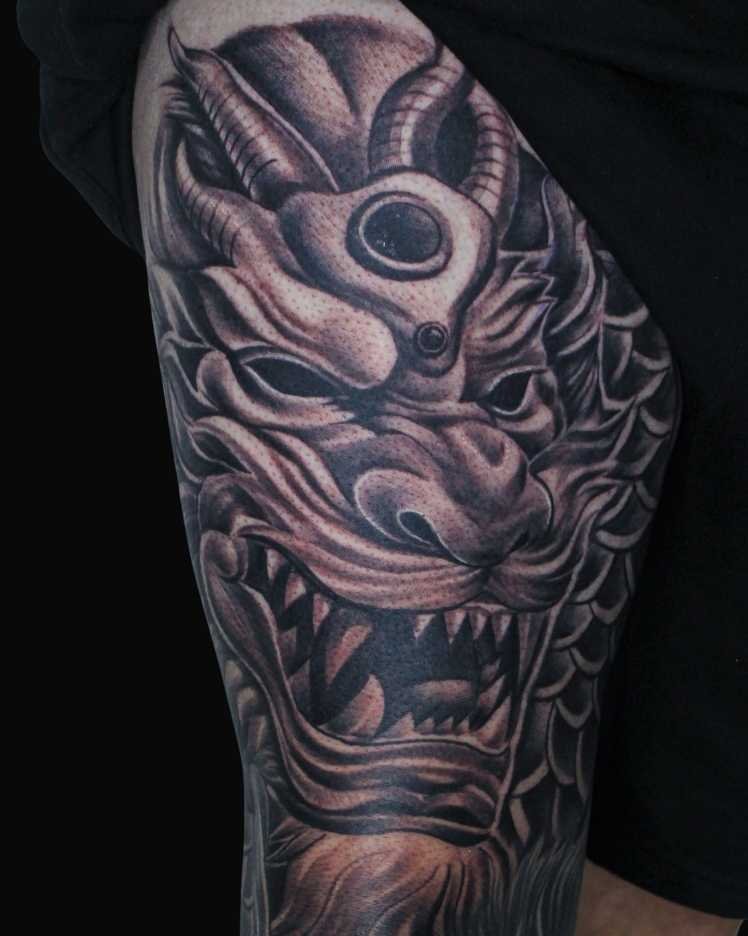Japanese tattooing, also known as Irezumi, Wabori, or Horimono, is a vibrant art form steeped in history and symbolism. Distinguished by its bold lines, vibrant colors, and captivating imagery, this style transcends mere decoration, offering a window into Japanese folklore, cultural values, and even a touch of rebellion.
Traditionally, the Tebori method, a meticulous and often years-long process, brought these intricate designs to life. Artists meticulously hand-tapped ink into the skin using needles attached to bamboo sticks. While the Tebori method is still practiced by some dedicated artists today, modern tattoo machines have become more prevalent.
One of the most striking aspects of Japanese tattoos is their commitment to bold outlines and flat, contrasting colors. Red, black, blue, and green take center stage, creating a visually arresting and easily readable design. This emphasis on clarity reflects the influence of Japanese woodblock prints, Ukiyo-e, known for their bold lines and vibrant colors. The resulting tattoo becomes a living embodiment of these artistic traditions.
Subject matter in Japanese tattoos is far more than just decoration; it’s a language of symbolism. Dragons, with their powerful forms and swirling scales, represent strength, protection, and good fortune. Koi fish, known for their tenacious journeys upstream, symbolize perseverance and overcoming adversity. Tigers, fierce and majestic, embody courage, leadership, and a connection to the natural world. Other recurring motifs include cherry blossoms, a poignant reminder of life’s fleeting beauty, crashing waves depicting the power and unpredictability of nature, and kabuki masks, which evoke the theatricality and impermanence of life.
Historically, Japanese tattoos were associated with individuals on the fringes of society, such as merchants, firefighters, and even criminals. These groups embraced tattoos as a form of self-expression and rebellion against the rigid social hierarchy of the time. However, in the modern world, Japanese tattoos have shed their association with social outcasts and gained widespread appreciation for their artistic merit. Today, tattoo enthusiasts and artists worldwide find inspiration in this rich tradition, incorporating Japanese motifs and techniques into their own creative endeavors.
Whether you’re considering a full-sleeve dragon or a delicate cherry blossom on your shoulder, remember that a Japanese tattoo is more than just an aesthetic choice. Research the symbolism behind the imagery to ensure your tattoo reflects the meaning you desire. With its captivating visuals and rich history, Japanese tattoo art offers a beautiful and meaningful way to adorn your body, while carrying a piece of Japanese culture and tradition with you.

